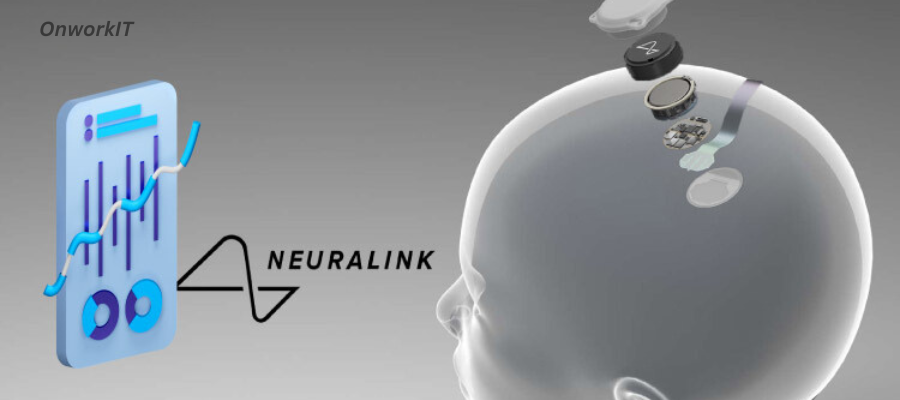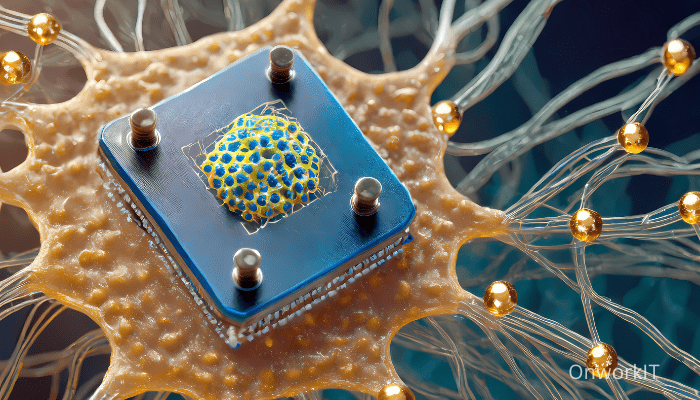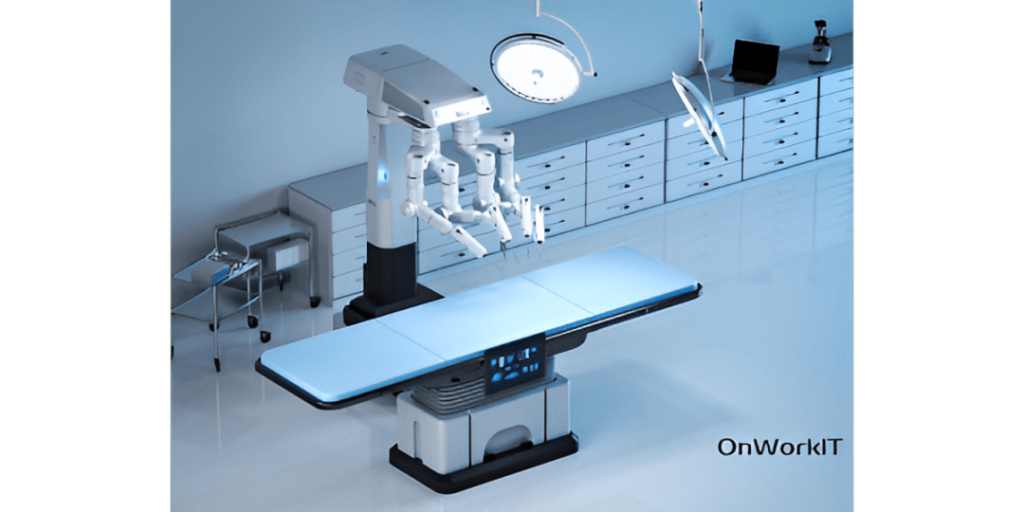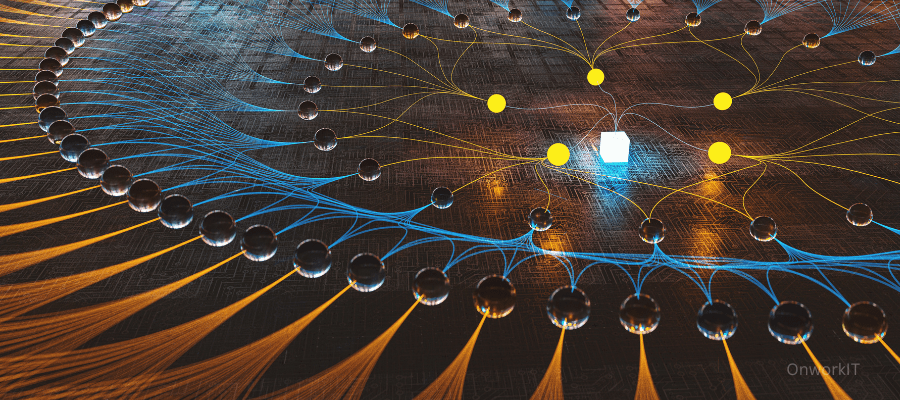Introduction to Neuralink
Neuralink, founded by entrepreneur Elon Musk in 2016, represents a groundbreaking venture into the realm of brain-computer interface (BCI) technology. The company’s mission is to create advanced neural devices that facilitate direct communication between the human brain and computers. This ambitious endeavor has the potential to revolutionize the way humans interact with technology.
The vision of Neuralink extends far beyond the current capabilities of existing BCI technologies. The company’s primary objective is to develop a high-bandwidth. By doing so, Neuralink aims to address a wide range of neurological conditions, such as Alzheimer’s disease, spinal cord injuries, and other debilitating disorders. Furthermore, the technology promises to enhance cognitive functions, offering unprecedented possibilities for human augmentation.
Neuralink’s approach involves the use of ultra-thin, flexible threads that are implanted into the brain. These threads are designed to detect neural activity with a high degree of precision, enabling the transmission of detailed information to and from the brain,The company’s innovative techniques aim to overcome the limitations. By leveraging advancements in materials science, robotics, and computational neuroscience, Neuralink seeks to create a more effective and user-friendly interface.
Ultimately, Neuralink envisions a future where the boundaries between human cognition and digital technology are blurred. This integration could lead to new forms of communication, enhanced learning capabilities, and even the potential for symbiotic relationships between humans and artificial intelligence.
Neuralink Technology
Neuralink has pioneered a range of advanced technologies to develop a sophisticated brain-machine interface. At its core, Neuralink employs ultra-thin, flexible electrodes, known as “threads,” which are less likely to damage brain tissue compared to traditional rigid electrodes. Facilitating a direct communication link between the brain and external devices.
Neuralink’s System
A crucial component of Neuralink’s system is its wireless connectivity. The threads are connected to a small, implantable device called the “Link.” The Link processes neural signals and transmits data wirelessly to external devices such as smartphones or computers. This wireless capability not only enhances user convenience but also reduces the risk of infection associated with wired connections
Machine learning plays a pivotal role in interpreting the complex neural signals captured by the electrodes. Neuralink’s algorithms are designed to decode these signals, translating them into actionable commands for connected devices. This process involves extensive data analysis and pattern recognition, enabling the system to learn and adapt to the user’s neural activity over time. As a result, the interface becomes more intuitive and responsive, improving the overall user experience.

In terms of implantation, Neuralink has developed a specialized surgical robot that can precisely insert the threads into the brain. This robot is capable of avoiding blood vessels during the procedure, minimizing potential complications. The implantation process is designed to be minimally invasive, with the goal of making the surgery as safe and efficient as possible.
Maintaining the implanted device is also a key consideration. Neuralink’s technology is designed for longevity and reliability with built-in mechanisms for monitoring the device’s performance and ensuring its continued functionality.
Overall, Neuralink’s innovative approach to brain-computer interfaces holds significant promise, and robotic surgery to create a seamless and efficient connection between the human brain and external devices.
The Neuralink Device
The Neuralink device represents a pioneering advancement in brain-computer interface technology. This device, about the size of a coin, is designed to be implanted in the skull, where it interacts directly with the brain’s neurons. Its compact and sleek design ensures it remains unobtrusive, allowing for seamless integration into the daily lives of its users. The device comprises multiple flexible threads, each thinner than a human hair, equipped with electrodes that can monitor and stimulate neural activity.
Bio compatible Materials
Constructed using biocompatible materials, the Neuralink device minimizes the risk of rejection and inflammation, ensuring long-term stability within the brain. The primary material used in its construction is a combination of medical-grade silicon and polymers, which provide both durability and flexibility. This ensures that the device can withstand the brain’s natural movements without causing damage or discomfort.
The installation process of the Neuralink device is a critical aspect of its design. Utilizing advanced robotic systems, the implantation procedure aims to be minimally invasive. The robot, guided by high-resolution imaging, accurately positions the threads into precise locations within the brain. This precision ensures that the device can be implanted with minimal disruption to the surrounding brain tissue.
Once installed, the Neuralink device’s functionality is maximized through its ability. This bidirectional communication enables a wide range of applications, from restoring sensory functions in individuals. Allowing for real-time data transmission and control, thereby opening up new possibilities in the field of neurotechnology.
In essence, the Neuralink device stands at the forefront of brain-computer interface innovations. Its development marks a significant step towards integrating human cognition with digital systems.
Role of Elon Musk
Elon Musk, known for his ambitious ventures in aerospace with SpaceX and electric vehicles with Tesla, has also set his sights on the field of neuroscience through Neuralink. His involvement with Neuralink is driven by a profound vision: to create advanced brain-computer interfaces (BCIs) that could revolutionize the way humans interact with technology. Musk’s motivation stems from a blend of personal curiosity about the human brain and a broader goal to address neurological disorders and enhance cognitive abilities.
Developing high-bandwidth
In founding Neuralink, Musk has brought his unique leadership style and considerable resources to the forefront of the company’s development. His approach combines rigorous scientific research with rapid technological advancement, a hallmark of his other enterprises. Under his guidance, Neuralink has made significant strides in developing high-bandwidth BCIs, aiming to merge human consciousness with artificial intelligence. This integration is seen as a critical step towards addressing some of the most pressing challenges in neuroscience and human health.

Musk’s long-term goals for Neuralink are as ambitious as they are transformative. He envisions a future where BCIs can treat severe neurological conditions such as Alzheimer’s, Parkinson’s, and spinal cord injuries. Furthermore, Musk sees the potential for Neuralink’s technology to enhance human cognition, offering benefits beyond medical applications. This includes the possibility of memory enhancement, improved learning capabilities, and even direct mental communication, which could fundamentally change human interaction.
Elon Musk’s role in Neuralink extends beyond mere investment; it is a driving force behind the company’s innovative spirit and relentless pursuit of groundbreaking technologies. His vision for a future where the human brain can seamlessly interface with machines has not only accelerated Neuralink’s development but also inspired a new wave of interest and research in the field of brain-computer interfaces. Through his leadership, Neuralink is poised to make significant contributions to neuroscience and human health, potentially altering the landscape of medical technology and human potential.
Brain-Computer Interface (BCI) Explained
The concept of Brain-Computer Interfaces (BCIs) represents a groundbreaking intersection of neuroscience and technology. BCIs are systems that facilitate direct communication between the brain and external devices, essentially serving as a bridge for neural signals to control computer systems or prosthetic limbs. These interfaces are designed to decode the electrical impulses generated by neuronal activity, translating them into commands that machines can understand and execute.
The science behind BCIs hinges on the ability to capture and interpret neural signals accurately. This typically involves the use of electrodes, either implanted within the brain or placed on the scalp, to monitor electrical activity. Once these signals are recorded, sophisticated algorithms process the data to decipher the intended actions or thoughts. This decoding process is pivotal, as it transforms raw neural data into actionable outputs, enabling users to control various devices seamlessly.

Potential Application
Potential applications of BCI technology are vast and transformative. In medical settings, BCIs can restore autonomy to individuals with severe motor disabilities by allowing them to operate wheelchairs or communicate through computer interfaces merely by thinking. Beyond healthcare, BCIs hold promise in fields like gaming, where they can create more immersive experiences, and in the military, where they can enhance the capabilities of soldiers through direct neural control of equipment.
When compared to existing BCI technologies, Neuralink’s advancements are particularly noteworthy. Traditional BCIs often involve cumbersome equipment and limited functionality due to low-resolution signal capture. In contrast, Neuralink aims to revolutionize the field with its high-density electrode arrays capable of capturing more detailed neural data. Furthermore, Neuralink’s wireless technology eliminates the need for intrusive hardware, thereby enhancing user comfort and mobility.
In essence, Neuralink is pushing the boundaries of what is possible with Brain-Computer Interfaces, offering a glimpse into a future where seamless integration between the human brain and technology might become a reality. By refining the accuracy and usability of BCIs, Neuralink could transform numerous aspects of daily life, making tasks that once seemed insurmountable entirely achievable.
Neuralink Implant Procedure
The Neuralink implant procedure is a sophisticated surgical process aimed at establishing a direct communication pathway between the human brain and external computing devices, This procedure is primarily conducted using advanced robotic systems to ensure precision and minimize risks. The surgical technique involves the implantation of a small, coin-sized device known as the “Link” into the skull, which is connected to the brain via ultra-thin, flexible threads. These threads are designed to interface with specific neurons, enabling the transmission of neural signals to and from the device.
Implanation
The use of robotic systems is crucial in the implantation process due to the intricate nature of the brain’s structure. Robotics provide a level of accuracy that surpasses human capability, ensuring that the threads are inserted with minimal damage to surrounding brain tissue. The robot assists in avoiding blood vessels, thereby reducing the risk of hemorrhage and other complications. The entire procedure is typically completed within a few hours under general anesthesia, making it relatively quick and efficient.
Post-surgery, patients enter a recovery phase that involves close monitoring by medical professionals. Recovery protocols are designed to ensure that the implant integrates smoothly with the brain’s existing functions. Initial post-operative care includes managing potential side effects such as swelling or discomfort at the implantation site. Long-term monitoring involves regular check-ups to assess the performance of the device and the patient’s neurological health.

Safety measures are paramount throughout the Neuralink implant procedure. Rigorous pre-surgical assessments are conducted to identify any contraindications or potential risks. During the surgery, sterilization and infection control protocols are strictly adhered to. Despite these precautions, there are inherent risks associated with any invasive procedure. Potential risks include infection, adverse reactions to anesthesia, and the possibility of the device malfunctioning or causing unintended neural effects. However, ongoing research and development aim to mitigate these risks, continually improving the safety and efficacy of the Neuralink implant.
Neuralink and Artificial Intelligence
Neuralink’s integration with artificial intelligence (AI) represents a significant leap in the development and functionality of brain-computer interfaces (BCIs). At its core, Neuralink aims to create a direct communication pathway between the brain and external devices, a process that generates vast amounts of neural data. AI is crucial in processing and interpreting this data, transforming raw neural signals into actionable information and commands.
Primary Roles of AI
One of the primary roles of AI in the Neuralink ecosystem is to decode the complex patterns of neural activity. The human brain consists of billions of neurons, each firing in unique sequences to control various functions. AI algorithms, particularly those based on machine learning and deep learning techniques, are adept at recognizing patterns within this data. By training these algorithms on extensive datasets, Neuralink can enhance the precision and accuracy of its interpretations.

Moreover, AI contributes significantly to the real-time functionality of Neuralink devices. For instance, in applications involving motor control, such as operating a robotic limb or cursor, AI must process neural inputs almost instantaneously. This rapid processing capability ensures that the user’s intentions are translated into actions with minimal delay, thereby improving the overall user experience and functionality of the device.
Furthermore, AI can facilitate continuous learning and adaptation within Neuralink systems. As the AI interacts with an individual’s neural data over time, it can refine its algorithms to better understand and predict the user’s needs and intentions. This adaptability is essential for personalized applications, such as medical treatments for neurological disorders, where the AI can tailor its responses to the specific neural patterns of the patient.
The potential for AI to enhance the capabilities of BCIs like Neuralink is vast. Beyond improving accuracy and response times, AI can enable more sophisticated applications, such as cognitive augmentation and memory enhancement. By leveraging AI, Neuralink is not just a tool for interfacing with the brain but a platform for expanding human potential in unprecedented ways.
Applications and Benefits of Neuralink
Neuralink technology holds immense promise across a spectrum of applications, particularly within the medical field. One of the most notable applications is in treating neurological disorders. By utilizing Neuralink’s brain-computer interface (BCI), it becomes possible to address conditions such as Parkinson’s disease, epilepsy, and spinal cord injuries. The technology can facilitate direct communication between the brain and external devices, potentially restoring lost functions for patients suffering from these disorders.

Moreover, Neuralink has the potential to significantly enhance cognitive functions. For instance, it could be used to augment memory, improve learning capabilities, and boost overall brain performance. This aspect of Neuralink could be particularly beneficial for individuals with cognitive impairments or those experiencing age-related cognitive decline.
Post-traumatic stress disorder
Another promising area for Neuralink is its potential applications in mental health. The technology could provide new ways to monitor and treat conditions such as depression, anxiety, and post-traumatic stress disorder (PTSD). By offering real-time insights into brain activity, Neuralink could enable more personalized and effective treatment plans for mental health conditions.
The broader benefits of Neuralink extend beyond medical applications. For example, the technology could significantly improve the quality of life for individuals with disabilities by providing new means of interaction with their environment. This could include controlling prosthetic limbs, operating computers, or even communicating through thought alone. Such advancements would offer unprecedented levels of independence and autonomy.
Furthermore, Neuralink enables new forms of human interaction with technology. It could revolutionize how we interact with digital devices, allowing for seamless integration between human thought and machine operations. This could pave the way for advancements in fields such as virtual reality, gaming, and even telepathy-like communication.
Overall, Neuralink’s multifaceted applications and potential benefits mark it as a groundbreaking technology with the capacity to transform various aspects of human life and health. Its ability to bridge the gap between the human brain and technology opens up new horizons in both medical and non-medical domains.
Neuralink Clinical Trials
Neuralink’s clinical trials represent a pivotal step in the development of advanced brain-computer interfaces (BCIs). As of now, these trials are in their early stages, focusing primarily on safety and initial efficacy. The company has received approval from the U.S. Food and Drug Administration (FDA) to commence human trials, marking a significant milestone in its journey towards practical and widespread application.
The current stage of Neuralink’s clinical trials involves a small group of participants who meet specific selection criteria. Participants are typically chosen based on their medical conditions, such as neurological disorders or spinal cord injuries, which could potentially benefit from Neuralink’s technology. These individuals undergo thorough screening processes to ensure they meet all necessary health and safety requirements.
Preliminary results from these trials have been promising. Early data suggests that the Neuralink device can effectively record and transmit neural signals, providing valuable insights into brain activity. Some participants have shown improvements in their ability to interact with external devices, demonstrating the potential for BCIs to enhance the quality of life for individuals with disabilities.

However, the path to wide-scale implementation of Neuralink’s BCIs is fraught with ethical considerations and regulatory hurdles. Ethical concerns primarily revolve around the potential for misuse of this technology, such as data privacy issues and the implications of enhancing cognitive abilities in healthy individuals. To address these concerns, Neuralink is committed to transparency and stringent ethical standards, ensuring that all data is handled responsibly and with the utmost respect for participants’ privacy.
SIgnificant Obstacles
Regulatory challenges also pose significant obstacles. The rigorous approval process required by the FDA and other regulatory bodies ensures that the technology is safe and effective before it can be widely adopted. Neuralink must continually adapt to meet these regulatory standards, which can be a lengthy and complex process.
Despite these challenges, the progress made in Neuralink’s clinical trials underscores the potential of BCIs to revolutionize medical treatment and human-computer interaction. As the trials advance, they will provide critical data that will shape the future of this groundbreaking technology.
Conclusion and Future Outlook
In reviewing the advancements spearheaded by Neuralink, it is evident that brain-computer interfaces (BCIs) are poised to revolutionize numerous aspects of human life. Neuralink’s innovative approach has demonstrated the potential to bridge the gap between human cognition and digital interfaces, offering unprecedented possibilities for medical, technological, and personal applications. The successful development of minimally invasive BCI technology aims to enhance the quality of life for individuals with neurological disorders, improve cognitive capabilities, and even facilitate seamless human-computer interactions.
However, as with any groundbreaking technology, Neuralink faces several challenges that must be addressed to realize its full potential. These hurdles include ensuring the safety and biocompatibility of the implanted devices, scaling up production while maintaining precision, and navigating regulatory frameworks. Ethical considerations, such as data privacy and the potential for misuse, also warrant careful deliberation. Addressing these issues will be crucial for the widespread acceptance and integration of BCIs into mainstream society.
Looking ahead, Neuralink’s roadmap outlines ambitious goals that could further extend the boundaries of what BCIs can achieve. The company envisions advancing their technology to enable high-bandwidth neural interfaces that could facilitate complex motor functions, such as controlling prosthetic limbs with natural ease. Additionally, Neuralink aims to explore applications in enhancing memory, learning, and overall cognitive function, which could redefine educational and professional landscapes.
Broader Implication
The broader implications of Neuralink’s work are profound, with potential impacts on healthcare, communication, and human augmentation. As the technology matures, it could offer new therapies for conditions such as paralysis, depression, and epilepsy, transforming the standard of care in neurology and psychiatry. Furthermore, the integration of BCIs into daily life could lead to new modes of interaction with technology, paving the way for innovations we can only begin to imagine.
In conclusion, Neuralink stands at the forefront of a burgeoning field with the promise to fundamentally alter our interaction with technology. As the company continues to overcome technical and ethical challenges, its developments could unlock new dimensions of human potential, making the future of brain-computer interfaces an exciting frontier to watch.
FAQs about Neuralink
Neuralink, a company founded by Elon Musk, has garnered significant attention for its ambitious goal of creating advanced brain-computer interfaces (BCIs). This section aims to answer some of the most frequently asked questions about Neuralink, covering various aspects such as the technology, applications, implant procedure, safety, and ethical considerations.
What is Neuralink?
Neuralink is a neurotechnology company developing implantable brain-machine interfaces. These devices aim to facilitate direct communication between the human brain and computers, potentially revolutionizing fields like medicine, neuroscience, and artificial intelligence. The core of Neuralink’s technology involves ultra-thin, flexible electrode threads designed to interact with the brain’s neurons.
What are the potential applications of Neuralink?
The applications of Neuralink’s technology are vast and varied. In the medical field, Neuralink could help treat neurological disorders such as Parkinson’s disease, epilepsy, and spinal cord injuries. Additionally, it could enhance cognitive functions, restore sensory capabilities, and even provide new ways for individuals with disabilities to control prosthetic limbs or computer systems. Beyond healthcare, Neuralink could advance human-computer interaction, enabling more seamless integration with digital devices and potentially augmenting human intelligence.
What does the implant procedure involve?
The implant procedure for Neuralink involves the surgical insertion of electrode threads into the brain. This process is performed using a specialized robot designed to minimize damage to brain tissue. The procedure is intended to be minimally invasive, similar to current neurosurgical techniques, and is expected to be performed under local anesthesia.
Is Neuralink safe?
Safety is a paramount concern for Neuralink. The company is conducting rigorous testing and extensive research to ensure the safety and efficacy of its devices. Early trials have been conducted on animals, and the next step involves human clinical trials. Neuralink is collaborating with regulatory bodies to meet stringent safety standards and ensure that the technology is safe for human use.
What are the ethical considerations surrounding Neuralink?
The development and deployment of Neuralink’s technology raise several ethical questions. Concerns include the potential for misuse, issues of privacy and consent, and the broader societal implications of enhanced cognitive abilities. Neuralink is committed to addressing these ethical challenges by engaging with ethicists, researchers, and the public to ensure that the technology is developed responsibly and transparently.










